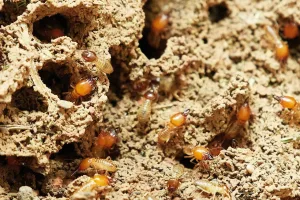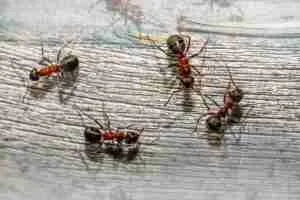26 Fun Facts about Axolotl | Why They Never Grow Up
-
Axolotls lack teeth, so they use suction to slurp up food!
-
Though they have lungs, axolotls rely mainly on their feathery gills for breathing.
-
A special slime protects axolotls from infection and helps them regenerate limbs.
-
Axolotls can even regrow lost jaws and hearts!
-
Axolotls come in a variety of colors, including black, white, and even spotted!
-
These salamanders have a powerful bite for their size and eat worms, insects etc.
-
Axolotls use their long, flat tails to propel themselves through the water.
-
These creatures have been for millions of years, even before mammoths!
-
The Aztecs believed axolotls were a reincarnation of Xolotl.
-
Axolotls are popular in scientific research due to their amazing abilities.
-
Axolotls can lighten or darken their skin tone to camouflage themselves.
-
Axolotls use their strong sense of smell to hunt for prey.
-
Axolotls never lose their larval features and remain permanently underwater.
-
Axolotls can lay hundreds of eggs at a time, ensuring the survival of their species.
-
Without eyelids, axolotls constantly look like they’re smiling, even while hunting!
Table of Contents
1. Axolotls are known as “walking fish”.
Axolotls are amphibians that retain their larval form throughout their life, which is why they are humorously called “walking fish.” They grow legs but never leave the water.
Unlike most amphibians that undergo metamorphosis, axolotls exhibit neoteny, meaning they retain juvenile traits even as adults, maintaining their aquatic lifestyle indefinitely.
2. Wild axolotls are critically endangered.
Native to Lake Xochimilco in Mexico City, wild axolotls face severe population declines due to pollution and invasive species. Conservation efforts are ongoing to protect their habitat.
Their numbers in the wild are estimated to be between 50 and 1,200, with most axolotls now found in captivity where efforts are made to preserve the species.
3. What Water Conditions Do Axolotls Need to Thrive?
Axolotls are highly sensitive to water quality, and maintaining the right conditions is crucial for their health and well-being. They thrive in cool, fresh water, with temperatures ranging between 60-64°F (16-18°C). Water with a pH level of 7.4 to 7.6 is ideal for them, and it’s important to keep the water clean and well-oxygenated.
In captivity, axolotls should be housed in aquariums with filtration systems that maintain high water quality. Keeping their environment stable is key to ensuring they remain healthy and continue to thrive.
4. Axolotls have inspired scientific research.
READ ALSO: 22 Fun Facts About a Cheetah | Speed and Grace
Due to their extraordinary regenerative abilities, axolotls are used in scientific research to study tissue regeneration and healing. They can regenerate limbs, spinal cords, hearts, and all parts of the central nervous system.
This unique trait has made them valuable in medical research, potentially offering insights into human regenerative medicine and cancer resistance.
5. Axolotls can regenerate lost body parts.
An amazing feature of axolotls is their ability to regenerate lost limbs and even vital organs without scarring. They can regrow limbs up to five times in their lifetime.
This regenerative capability has made them a subject of extensive scientific studies aimed at understanding and harnessing these mechanisms for medical advancements.
6. Axolotls come in various colors.
Wild axolotls are typically brown or black with speckles of gold, while captive axolotls can be white, albino, or even golden. Some rare individuals may be piebald, exhibiting a mix of colors.
These color variations are due to selective breeding in captivity, making them popular in the pet trade for their unique and striking appearances.
7. Axolotls have a keen sense of smell.
Axolotls rely heavily on their sense of smell to locate food and communicate with each other. They use specialized sensory organs to detect prey and potential mates underwater.
This keen olfactory ability is crucial for their survival, especially in the murky waters of their natural habitat.
8. They live their entire lives underwater.

READ ALSO: 24 Fun Facts About Pigs | Ready To Say Awww
Axolotls never transition to a terrestrial life like most amphibians. They retain their gills and stay aquatic throughout their lifespan, which can be up to 15 years in captivity.
This lifelong aquatic nature is due to their neotenic traits, which prevent them from undergoing full metamorphosis.
9. How Do Axolotls Breathe? The Role of Their External Gills.
One of the most distinctive features of axolotls is their external gills, which protrude from the sides of their heads. These gills are used to extract oxygen from the water, allowing the axolotls to breathe without having to come to the surface. While axolotls do have lungs, they primarily rely on their gills for respiration, which is why they are well-suited for life in cool, oxygenated water.
Interestingly, axolotls can also absorb oxygen through their skin, a feature they share with many amphibians. This dual respiratory system is part of what makes axolotls such adaptable creatures.
10. They are top predators in their habitat.
In their natural environment, axolotls are formidable predators, feeding on small fish, worms, and insects. They use a suction method to capture their prey.
However, they face threats from introduced species like tilapia and carp, which compete for food and prey on young axolotls.
11. Axolotls can also breathe through their skin.
Besides using their gills and lungs, axolotls can breathe through their skin, thanks to thin membranes that allow for gas exchange. This ability is common among amphibians.
This skin-breathing capability provides them with an additional means to obtain oxygen, especially in low-oxygen environments.
12. They are used in laboratories for research.

READ ALSO: 24 Fun Facts About Animals That Will Blow Your Mind
Axolotls are extensively used in scientific research due to their regenerative abilities. Studies focus on neural tube defects, heart defects, and cancer resistance.
Researchers hope that understanding axolotl regeneration can lead to breakthroughs in human medical treatments, particularly in regenerative medicine and oncology.
13. Axolotls are solitary and territorial.
In captivity, axolotls can become aggressive and territorial towards each other, often biting the gills, tails, and toes of tank mates. They prefer solitude.
This behavior underscores the importance of providing ample space and individual habitats for axolotls in captivity to prevent injuries and stress.
14. Axolotls and Cannibalism: What Happens When Food Is Scarce.
While axolotls are generally peaceful creatures, they can exhibit cannibalistic behavior in the wild and in captivity, especially when food is in short supply. In times of extreme hunger, axolotls have been known to prey on their own kind. This behavior is more common in smaller axolotls, as larger individuals have the ability to dominate and sometimes eat smaller ones.
Cannibalism in axolotls is not uncommon in their wild habitat, where food availability fluctuates. This trait is just another example of their survival instincts in action.
15. The Cultural Significance of Axolotls in Aztec Mythology.
In addition to their biological uniqueness, axolotls hold cultural significance in Mexican history. In Aztec mythology, the axolotl was linked to the god Xolotl, who was believed to have the power of transformation and the ability to shape-shift. Xolotl was often depicted as a dog-headed figure, and the axolotl was considered a manifestation of his essence.
The axolotl’s importance to the Aztecs was so significant that they associated it with both life and death, as Xolotl was said to guide souls through the underworld. This deep-rooted connection to ancient beliefs has contributed to the axolotl’s mystique and enduring popularity in Mexican culture.
16. They have a voracious appetite.

READ ALSO: 23 Fun Facts About Fish | Under Water Secrets
Axolotls have a strong appetite and will eat anything they can fit in their mouths, including worms, insects, and small fish. They use a suction method to capture their prey, pulling it into their mouths.
In captivity, they can be fed a diet of live or frozen food, such as brine shrimp and worms, but care must be taken to avoid disease transmission from live prey.
17. Axolotls reach sexual maturity at a young age.
Axolotls become sexually mature between 6 and 12 months old. In the wild, they typically breed during the spring and summer months.
In captivity, they can breed year-round, laying eggs on underwater vegetation or other surfaces, with each female capable of laying up to 1,000 eggs at a time.
18. Why Axolotls Don’t Undergo Metamorphosis: The Science Behind It.
Axolotls do not undergo metamorphosis, but the reason for this goes beyond just genetic curiosity. Scientists believe that axolotls retain their larval characteristics due to a genetic mutation that prevents them from undergoing the typical amphibian transition to adulthood. This condition is known as “neoteny.”
The ability to remain in the juvenile form is beneficial in their aquatic environment, where they continue to thrive without the need to change their habitat. This trait is not only intriguing from a biological standpoint but has also provided key insights into the development of other amphibians.
19. How Big Do Axolotls Get? Size and Weight Revealed.
Axolotls can grow to impressive sizes, especially when they are well cared for in captivity. On average, they reach a length of around 9 to 12 inches, though some individuals can grow up to 18 inches long. This makes them one of the larger species of salamander.
In the wild, axolotls tend to remain smaller due to limited food sources and environmental pressures. However, those in captivity, with regular feeding and proper care, can reach their full size and sometimes exceed the typical length.
20. Axolotls have an extensive genome.

READ ALSO: 22 Fun Facts About Kangaroos | Hopping Pouches
The axolotl genome is the second longest in the animal kingdom, containing 32 billion base pairs, which is ten times the length of the human genome. This extensive genetic makeup contributes to their unique regenerative abilities.
Scientists are studying their genome to unlock secrets that could benefit regenerative medicine and other fields.
21. They have no eyelids.
Axolotls do not have eyelids, which makes it difficult to tell when they are sleeping. They tend to rest in hidden spots to avoid predators.
This trait, combined with their nocturnal habits, helps them stay safe in their natural environment.
22. Axolotls are solitary animals.
In the wild, axolotls are solitary and typically only come together for breeding. They prefer to stay alone to avoid territorial disputes and injuries.
In captivity, it is best to house them separately or ensure ample space to reduce aggressive interactions.
23. They are top predators in their habitat.
Despite their small size and harmless appearance, axolotls are effective predators in their native habitat. They prey on worms, small fish, and crustaceans, using their keen sense of smell to locate food.
However, they face threats from larger fish and birds introduced into their environment, which has contributed to their endangered status.
24. Axolotls have a unique appearance due to neoteny.

READ ALSO: 22 Fun Facts About Rabbits | Hopping Wonders
Axolotls retain their larval features throughout their life due to neoteny, including their external gills and finned tails. This gives them a distinctive, almost otherworldly appearance.
Their ability to retain juvenile traits while reaching sexual maturity sets them apart from most other amphibians.
25. They are used in cancer research.
Axolotls have shown a natural resistance to cancer, making them valuable in scientific research aimed at understanding and potentially combating the disease.
Their regenerative abilities and genetic makeup provide insights that could lead to breakthroughs in cancer treatment and regenerative medicine.
26. Axolotls can be found in various colors.
In the wild, axolotls are typically dark-colored, but captive breeding has produced a variety of colors, including white, golden, and albino varieties.
This diversity in coloration has made them even more appealing as pets and research subjects.
FAQs
Axolotls are unusual because they never fully mature and retain their larval form throughout life, a condition known as neoteny. This allows them to regenerate lost limbs and other tissues.
Axolotls inhabit freshwater lakes and ponds with muddy bottoms and dense vegetation, preferring cool water temperatures and areas with ample hiding places.
There are only about 50 to 1,000 axolotls left in the wild due to habitat destruction, pollution, and invasive species, making them critically endangered.
Axolotls have one heart, similar to other vertebrates. However, their regenerative abilities are remarkable, allowing them to regrow many body parts, including their heart tissue.
Axolotls typically live for 10 to 15 years in captivity when provided with proper care and a suitable environment.





